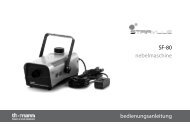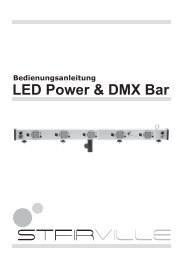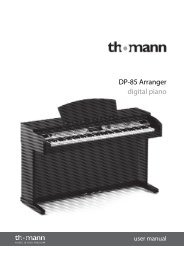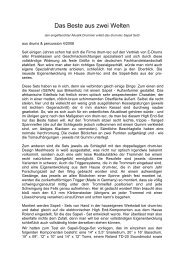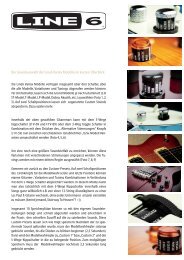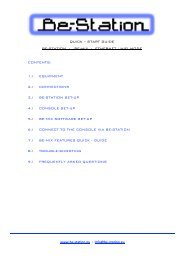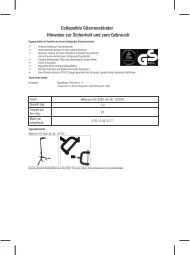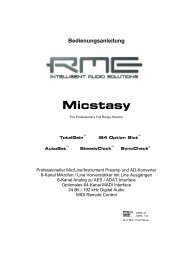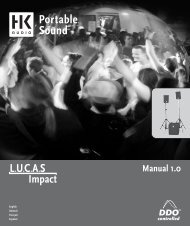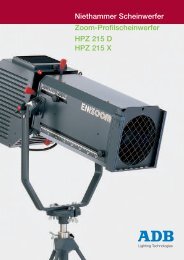You also want an ePaper? Increase the reach of your titles
YUMPU automatically turns print PDFs into web optimized ePapers that Google loves.
Vel to Amp default<br />
During the BFD2 setup wizard which runs when you first launch BFD2, you<br />
are asked if you want an amplitude-scaled response. Your choice initializes<br />
the state of the Vel to Amp default amount preference.<br />
If you choose a natural response – a Vel to Amp setting of 0% – there is<br />
no amplitude scaling with different velocities within BFD2: the velocity layer<br />
samples, played at varying degrees of force, take care of the ‘loudness’ over<br />
the velocity range.<br />
If you choose an amplitude-scaled response during the setup wizard, the Vel<br />
to Amp default is set to +100%. This means that the amplitude scales down to silence over the velocity range.<br />
Setting up this preference is a good idea if you want to have a more ‘conventional’ dynamic response for BFD2’s sounds without<br />
having to set the Vel to Amp parameter for each articulation in each kit-piece after you load it, or load a suitable kit-piece preset.<br />
This preference can be fine-tuned in the Engine preferences, where you can specify a default Vel to Amp amount between -100%<br />
and +100%.<br />
Vel to Tune<br />
This control allows the tuning of each articulation to vary depending on the incoming note velocity.<br />
There are a lot of uses for this control, from extreme creative effects to very subtle changes which can give some extra character<br />
to the sound of the kit.<br />
Settings range from -100% to 100%. This parameter can have positive and negative values for increases and decreases in pitch<br />
with higher velocities.<br />
Vel to Damp<br />
Adjusting this setting allows the amount of damping applied to the articulation to be varied according to the velocity of incoming<br />
note events.<br />
Any changes in the damping applied to each articulation as a result of this parameter are relative to the kit-piece’s overall damping<br />
amount setting.<br />
Settings range from -100% to 100%. This parameter can have positive and negative values for increases and decreases in the<br />
damping amount with higher velocities.<br />
Vel RND<br />
The Vel RND control allows you to control the amount of humanization applied to each articulation of a kit-piece when using any<br />
of the humanization features in BFD2.<br />
Settings range from 0% to 100%. To turn off randomization completely for an articulation, set this parameter to 0%.<br />
It can be useful to turn off randomization for articulations or kit-pieces when using lower Max velocity layers and detail settings<br />
– randomization in these cases can sound unnatural and intrusive.



